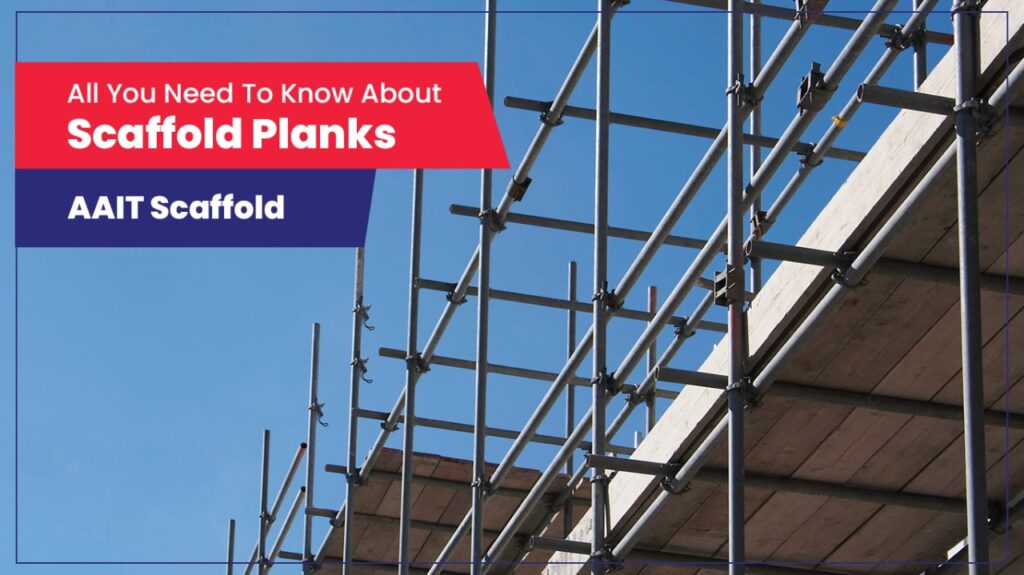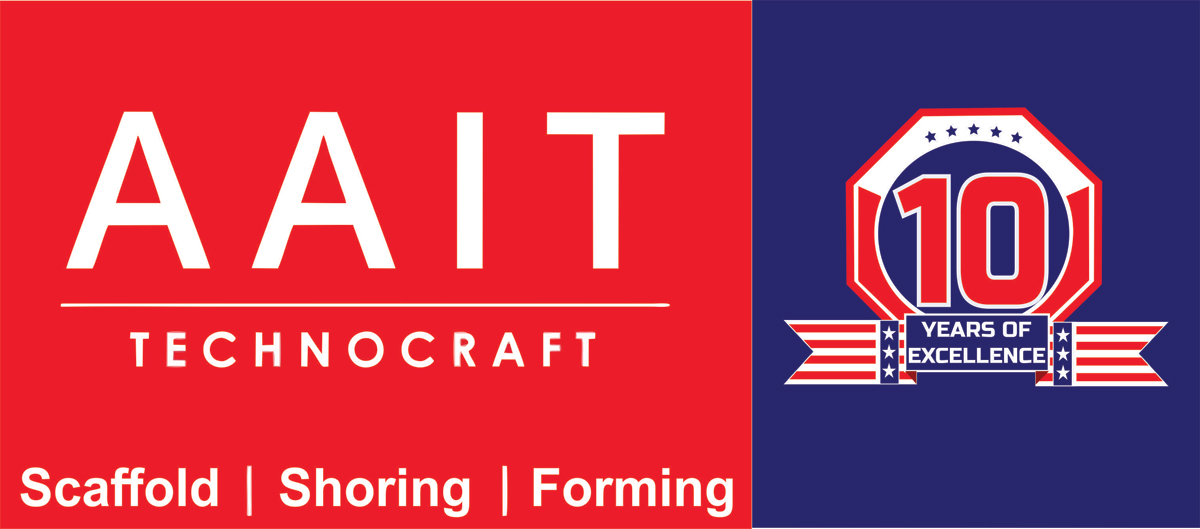
Are you planning a construction project or just curious about how workers stay safe up high? Scaffold planks are more important than you might think. They not only support weight but also offer safety and efficiency. This blog will walk you through everything worth knowing about scaffold planks. Ready to get started?
1. What is Scaffold Planks?
Have you ever considered how individuals get to those high spots safely, whether during a construction job or for repairs? That’s where scaffold planks come in! Scaffold planks provide robust and stable platforms or pathways for workers to navigate at heights. Scaffold planks are used around different scaffolding systems like ringlock, cuplock, kwikstage, and mobile towers. Made from tough materials like aluminum, steel, or wood, these planks are specially designed to keep workers safe and steady while they get the job done.
2. Types of Scaffold Planks
When choosing scaffold planks, you have numerous options to consider depending on the specific needs of your project.
Wood
Classic wooden scaffold planks are typically crafted from robust woods such as fir or pine. They feel comfortable underfoot and are easy to install and remove. You will usually see them in traditional bamboo and wooden scaffolding or heavy-duty ramps. To make them last longer, the ends are often reinforced with iron wire or sheets.
Steel
Do you need something tougher? Steel scaffold planks may be the way to go. They are made of robust steel, such as Q195 or Q235, and are ideal for heavy-duty operations. They are commonly seen on ringlock scaffolding, kwikstage systems, and scaffold towers, particularly in industries where fire safety is critical.
Aluminum
If you want something lightweight but robust, aluminum scaffolding boards are an excellent choice. They can be easily transported, have a long lifetime, and do not rust. There are various operations like inside decoration, exhibition hall upkeep, and high-rise building that require weight and call for aluminum planks.
Plastic
Plastic scaffold planks are the new kid on the block and are produced from recyclable materials. They are lightweight, durable, and super easy to clean, but they are not the best in extreme weather or with heavy impact objects. Even though they are eco-friendly, many still prefer sticking to the more familiar wood or steel boards.
3. Advantages and Disadvantages of Scaffold Planks
Wooden scaffold planks:
Advantages
1) The wooden planks are light in weight and are easy to carry.
2) The natural surface absorbs sounds and will help you to lower noise levels.
3) The textured surface helps stop slipping and offers a good grip.
4) More reasonably priced than other materials, they are.
5) Installation and removal call for no further tools; they are quick and easy.
Disadvantages
1) They require frequent maintenance to keep them safe and in good shape.
2) Even treated wood can absorb water, making it heavier and less stable.
3) Wood is combustible unless treated, which might weaken the plank.
4) They may shift and bounce slightly when walked on, particularly over time.
Steel Scaffold Planks:
Advantages
1) They have a high load-bearing capability and can accommodate large equipment and workers.
2) Steel is very resistant to moisture and extreme weather conditions.
3) These boards are fire-resistant and work well in high-temperature situations.
4) They require little maintenance and are easy to clean.
5) Steel planks are long-lasting, which minimizes the need for regular replacements.
Disadvantages
1) The initial cost is higher than with wood or other materials.
2) Steel planks are heavy, which makes them difficult to transport and install.
3) Their weight raises transportation expenses, particularly at larger sites.
4. Difference Between Steel Scaffold Planks And Wooden Scaffold Planks
| Aspect | Wooden Scaffold Planks | Steel Scaffold Planks |
| Cost | More cheap and suitable for short-term or small-scale initiatives. | Material and production complexity generally result in higher costs |
| Maintenance | Weather damage necessitates regular maintenance, treatments, and replacements. | Low maintenance and improved resilience to weather and corrosion. |
| Transport | Although lightweight and portable, it requires cautious handling to avoid moisture damage. | Heavier and more difficult to transport, but more stable and less likely to be damaged in transportation. |
| Lifetime | It wears easily, rots, and is susceptible to weather damage; thus, it does not endure as long. | Long-lasting and resilient, even in harsh site circumstances. |
| Load Bearing | Because of its lesser strength, it is better suited to light-duty applications and temporary settings. | Stronger and more stable, ideal for heavier loads and long-term projects. |
5. Maintenance and Storage
Maintaining the safety and lifetime of your scaffold plank means how they are taken care of. These ideas help you to properly preserve and store them:
1) Cleaning and preserving scaffold planks.
Cleaning scaffold boards on a regular basis will help to remove dirt and debris. Avoid using harsh chemicals or abrasive cleansers that can damage the wood, ensuring that it lasts longer when reused.
2) Treating with protective coatings.
For wood planks or hot-dip galvanized steel, consider protective coatings, including corrosion-resistant paint. Verify treatment options with the supplier when you are buying.
3) Ideal Scaffold Plank Storage
Store the planks under dry, safe, well-ventilated conditions. Protect wood from direct sunlight and dampness to prevent damage.
6. OSHA requirements for scaffolding planks
OSHA (Occupational Safety and Health Administration) was founded in 1970 and establishes safety rules to maintain safe working environments, including scaffolding.
OSHA requires wooden scaffold planks to follow accepted grading standards and be in good condition, free of cracks and coverings such as paint or concrete that could conceal deterioration. Usually, boards that say “OSHA Conformed” meet these standards.
The length and thickness of planks also matter. Longer boards bend more under weight (deflection), reducing load capacity. As a result, choosing planks of the correct size and strength is crucial. Regulations differ by region, so always check with local authorities or experts to verify compliance.
7. Scaffold Board Safety Tips
When using scaffold boards, it is crucial to adhere to a few simple but important safety requirements to keep everyone on the job safe.
Install properly.
Make sure all boards are tightly secured and accurately installed before usage. Planks that are loose or uneven could cause major mishaps.
Inspect often.
Before and after use, always check scaffolding boards. Look for cracks, splits, warping, and other damage markers. Should you find any issues, quickly replace the compromised board with a safer one.
Know the Weight Limits
Each scaffold board comes with a load capacity; make sure you stick to it. Overloading boards beyond their limits can cause them to weaken or break, which will put everyone at risk.
Distribute Weight Evenly
Never pile tools or supplies in one place. To prevent straying too much to one side of the board, make sure the weight is distributed equally.
Conclusion
Scaffold planks are required for safe operations at heights. Choosing the appropriate type, using them correctly, and performing regular maintenance all help to prevent accidents. Always observe safety guidelines and inspect your planks before use. So, before you begin your next project, take a moment to inspect your planks to ensure that they are safe, clean, and adequate for the work. If so, you’re now a step closer to working smarter and safer at height.
FAQ
1. Can I get scaffold planks in customized sizes?
Absolutely! If you require a specific length or width, please let us know. We are happy to tailor the planks to meet your exact specifications and ensure that they match your project correctly.
2. Are any scaffold planks made of pine wood?
Yes, some scaffold boards are constructed of pine wood, particularly for light or temporary operations. However, because pine is a softwood, it may not be as strong or durable as materials such as steel, aluminum, or composite boards, which are better suited for heavy-duty or long-term use.
3. What is the lifespan of a scaffold plank?
A lot of elements define this, which includes the composition, use, and upkeep of the board. If the board is well maintained and made of metal and other premium materials, it can last a great length of time. Their lifetime can be much increased by regular checks and proper storage.
4. Comparatively, are scaffold boards stronger than deck boards?
Not exactly, as they serve different purposes. Scaffold boards support workers and supplies at building sites. On the other hand, decking planks do the job in outdoor spaces like patios. While decking boards put look and comfort underfoot first, scaffold planks stress strength and stability.












 Download
Download
Comments are closed